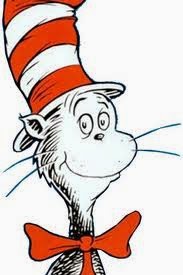This blog is a collection of Gabe Gabrielsen's greatest stories. Each story Gabe shares conveys a powerful message. Most of Gabe's stories are fact, some however are legends and a few - well they are - pure fiction. Gabe shares these stories to improve your professional effectiveness and enhance your personal commitment. By all means share them with your family, friends and business colleagues. Sincerely Gabe Gabrielsen
Tuesday, April 22, 2014
Why Johnny Can't Read - You Won't Believe Why
In the early 1950's an Austrian educational specialist published a study in America called "Why Johnny Can't Read." His study argued that the Dick and Jane primers used at that time throughout American schools to teach children to read weren't working.
He believed they were horrible educational tools; according to him they were stupid, pointless, tasteless little readers. He doubted whether any middle-class, middle-income, middle-IQ student could learn anything by reading "Look, look" or "Yes, yes" or "Come see Spot" or "See the funny, funny animal."
He believed the stories in these primers were boring and the books ineffective at best in helping American children learn how to read.
William Spaulding, a publisher from Houghton Mifflin's Publishing Company who worked in the educational division and read this Austrian study, thought it might be right. He met a man a few years earlier who he'd published a few not-very-well-known but very imaginative children's books that his children really loved to read over and over.
Mr. Spaulding thought this unknown writer of children's books might be able to write a book that would really be good for teaching American children how to read, want to read, and read over and over again. So he invited the author over for dinner one night and explained the dilemma to him. Then Mr. Spaulding asked, "Can you write a book with a simple story that first-graders won't be able to put down and will just want to read over and over again?"
Stunned by the question and not sure how to respond, the writer asked if he could have some time to think about it and work on it. He left that dinner and spent the next nine months composing a book he thought would meet the goals of Mr. Spaulding.
A meticulous editor and reviser, he believed that a children's book must be kept simple. Every chapter had to be boiled down to just one simple paragraph so a child would be able to understand it. He worked especially hard on the word count as he wanted to use as few words as possible.
The small children's reader this writer finally produced at Mr. Spaulding's request is now considered to be the most popular children's book ever written in American history. Within less then a year of its initial publication, it was selling 12,000 copies a month and within five years from its release it had sold over a million copies. This was an incredible feat for a children's book.
His book contained a grand total of 1,702 words but the kick is he only used 220 different words in the entire book. His simple yet effective book revolutionized the way children in America learn to read. The book he wrote and presented to Mr. Spaulding nine months later was The Cat in the Hat.
Dr. Seuss (aka Theodor Seuss Geisel) is without a doubt the best-selling children's book author of all time. He has since written 63 other children's books in all, including Horton Hears a Who! (1954), One Fish, Two Fish, Red Fish, Blue Fish (1960), Green Eggs and Ham (1960), Hop on Pop (1963), Oh, the Thinks You Can Think! (1975), The Butter Battle Book (1984), and of course, The Cat in the Hat (1957).
Subscribe to:
Post Comments (Atom)

No comments:
Post a Comment